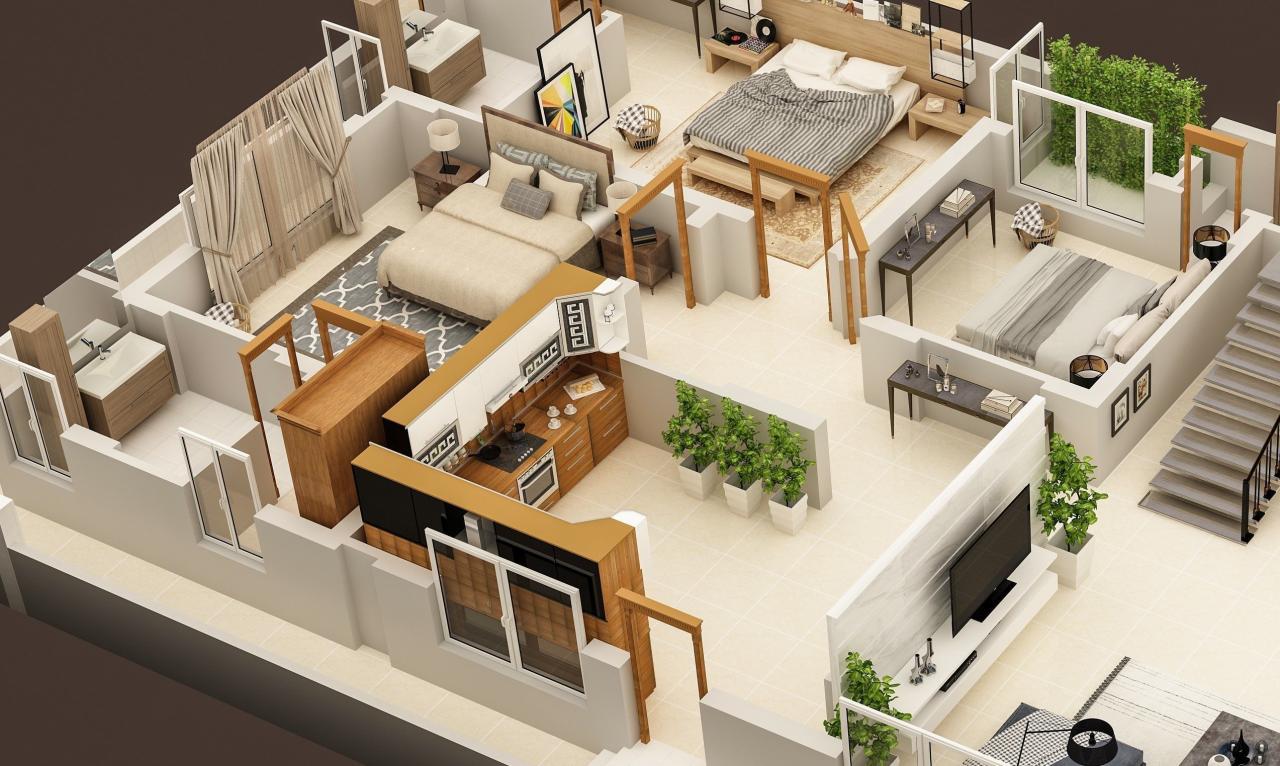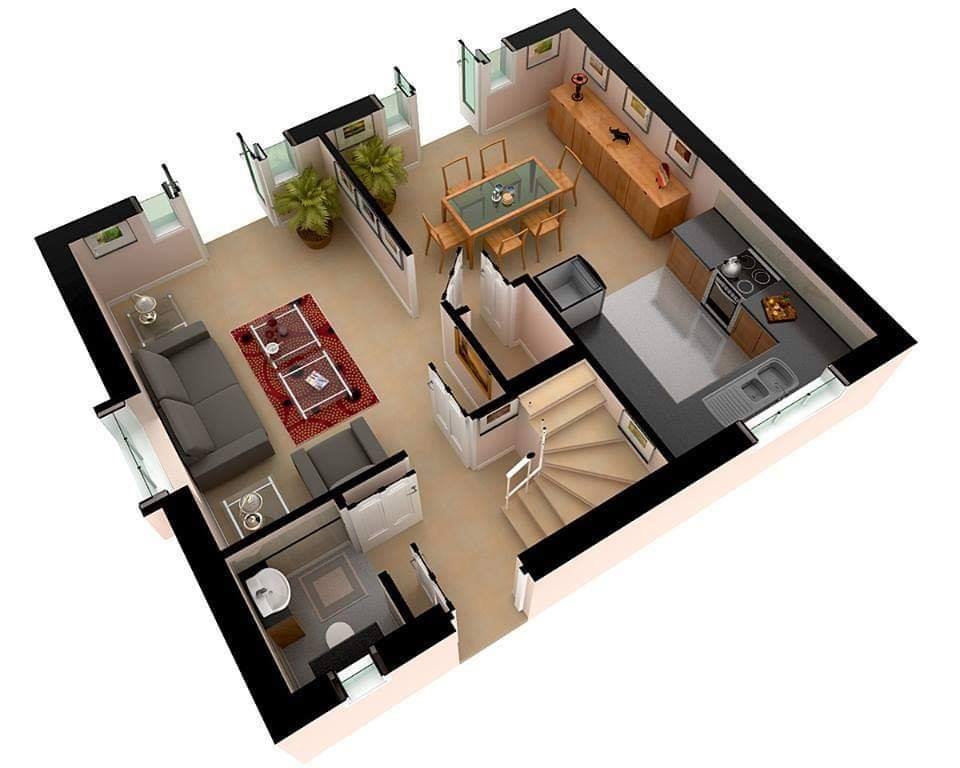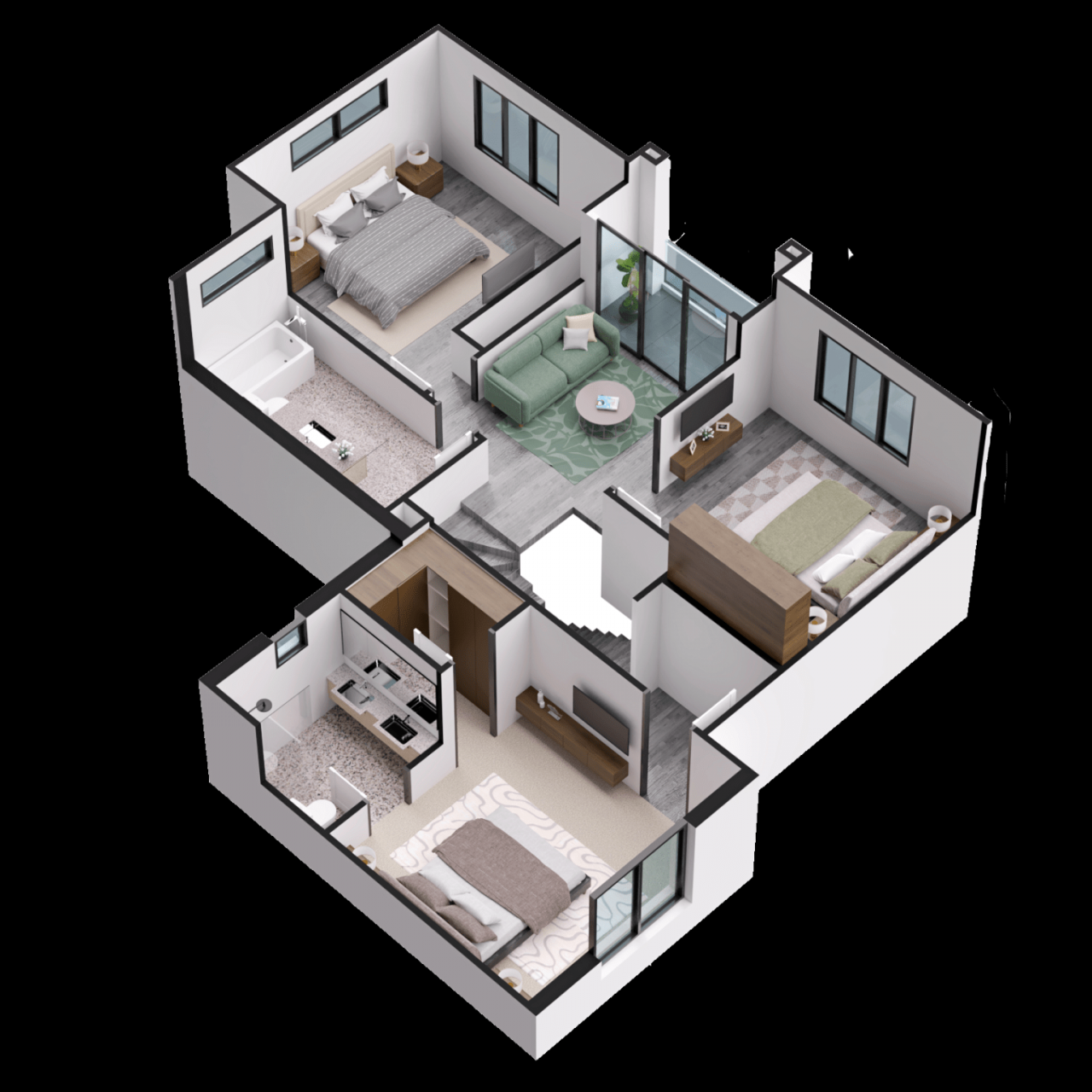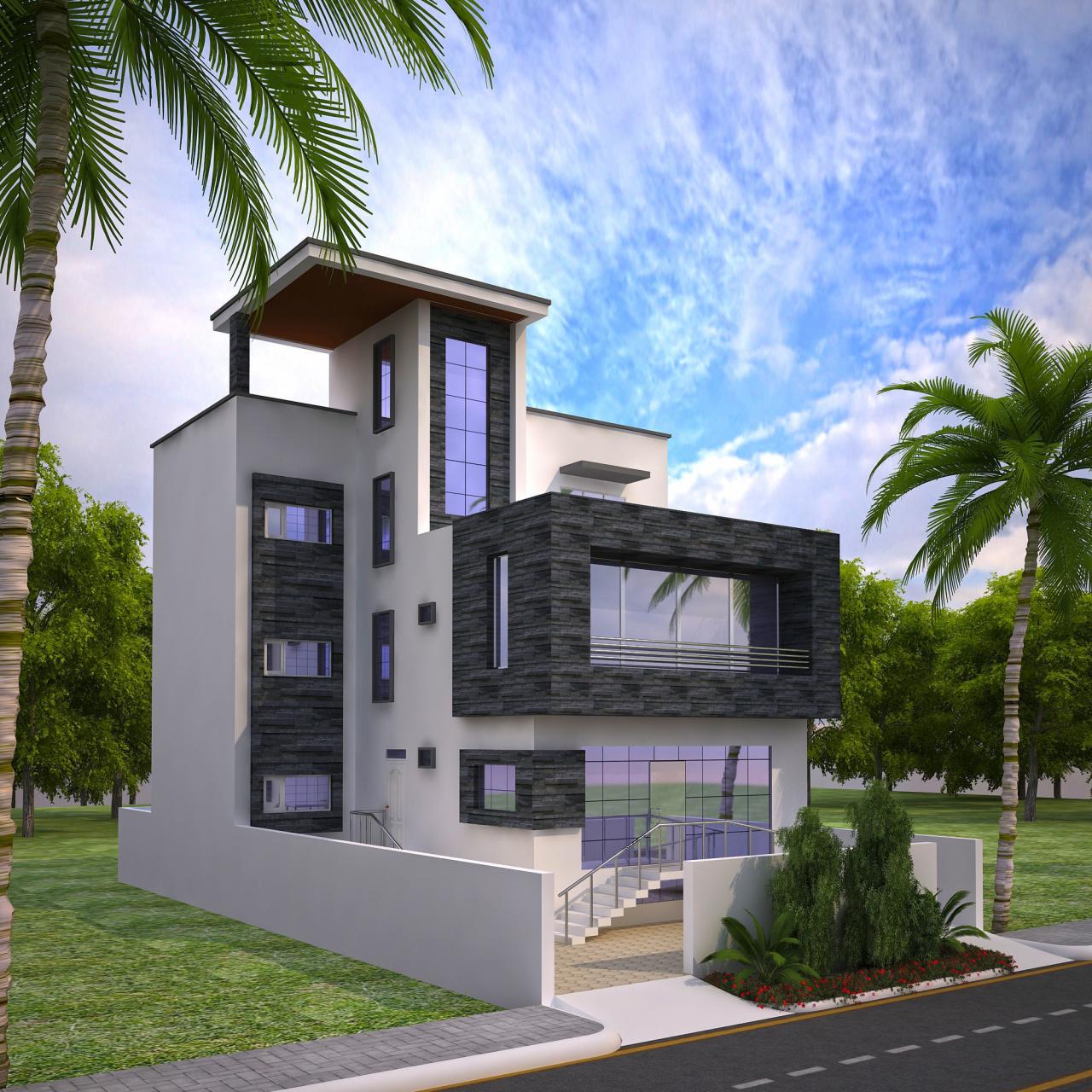3D home design online free tools have exploded in popularity, transforming how we envision and plan our living spaces. No longer confined to expensive software, anyone can now craft detailed 3D models of their dream homes, experimenting with layouts, styles, and finishes with unprecedented ease. This exploration delves into the world of free online 3D home design, examining its evolution, capabilities, limitations, and the exciting future it holds.
From the rise of user-friendly interfaces to the integration of AI-powered features, we’ll dissect the key features and functionalities of various platforms, comparing their strengths and weaknesses. We’ll also explore the differences between free and paid software, helping you determine which option best suits your needs and budget. Get ready to unlock your inner architect!
Popularity and Trends of Online 3D Home Design Tools

The rise of free online 3D home design software has revolutionized interior design and home renovation planning, empowering homeowners and professionals alike. Over the past five years, this sector has experienced explosive growth, driven by increased internet access, affordable computing power, and a desire for user-friendly design tools. This accessibility has democratized the design process, allowing individuals to visualize their dream homes without the need for expensive professional software or services.The growth of free online 3D home design software can be attributed to several factors.
Firstly, the decreasing cost of cloud computing and increased bandwidth have made it easier for companies to offer these services. Secondly, the intuitive nature of drag-and-drop interfaces and simplified user experiences has made these tools accessible to a wider audience, regardless of their technical expertise. Thirdly, the growing popularity of home renovation shows and DIY culture has fuelled a demand for tools that enable individuals to experiment with different design options before committing to real-world changes.
Growth of Free Online 3D Home Design Software
While precise user numbers are often proprietary information, the growth is demonstrably significant. Anecdotal evidence from industry blogs and news articles points to a substantial increase in website traffic and app downloads for leading platforms. For instance, many platforms report a yearly increase in user accounts exceeding 20%, reflecting the widespread adoption of this technology. This growth is further evidenced by the increasing number of online tutorials and communities dedicated to using these tools, showcasing their expanding user base and influence.
Comparison of User Bases Across Popular Platforms
Precise user base figures for free online 3D home design platforms are generally not publicly available due to competitive reasons. However, a general observation based on app store rankings and website traffic suggests a tiered structure. A platform like Planner 5D likely boasts a larger user base due to its established presence and extensive marketing. Roomstyler 3D Home Planner might occupy a mid-range position, offering a balance between features and ease of use.
A newer platform, such as HomeByMe, may have a smaller but rapidly growing user base, attracting users with its unique features or design philosophy. The competitive landscape is dynamic, with new entrants and feature updates constantly shifting the relative positions of these platforms.
Top Features Valued by Users
Users consistently prioritize three key features in free online 3D home design tools: ease of use, realistic rendering capabilities, and a wide selection of design elements. Ease of use is paramount, with intuitive drag-and-drop interfaces and simplified workflows significantly enhancing user experience. Realistic rendering, including accurate lighting and material representation, allows users to visualize their designs accurately. A vast library of furniture, fixtures, and décor items provides ample options for customization and personalization.
The absence of any of these key features can significantly detract from user satisfaction and adoption.
Evolution of User Interface Design
The evolution of user interface design in free online 3D home design software mirrors the broader trends in software design. Early platforms often featured clunky interfaces with complex menus and navigation systems. Imagine a screenshot from a 2010s era platform showing a cluttered toolbar with numerous icons, a less intuitive 3D model viewer, and a limited color palette. The user experience was often frustrating, requiring significant technical knowledge to navigate.
More recent iterations, however, prioritize intuitive drag-and-drop interfaces, streamlined toolbars, and simplified workflows. A modern screenshot would showcase a clean and minimalist design, with a larger 3D model viewer, a more intuitive color palette selection, and readily accessible design elements. The user experience is significantly smoother and more enjoyable, making these tools accessible to a wider range of users, regardless of their technical skills.
The shift reflects a move towards user-centric design, emphasizing simplicity and ease of use over technical complexity.
Features and Functionality of Free Online 3D Home Design Software: 3d Home Design Online Free

Free online 3D home design software offers a surprisingly robust set of features, allowing users to explore design ideas without significant financial investment. These tools, while often lacking the advanced capabilities of paid professional software, provide a valuable entry point for homeowners, DIY enthusiasts, and even aspiring interior designers. Understanding their functionalities is key to choosing the right platform for your project.
Core Functionalities of Free Online 3D Home Design Platforms
Several free online platforms offer a range of core functionalities. The following table compares five popular options, highlighting their strengths and weaknesses. Note that features and limitations can change over time, so always check the software’s website for the most up-to-date information.
| Feature | Planner 5D | SketchUp Free | Roomstyler 3D Home Planner | HomeByMe | Sweet Home 3D |
|---|---|---|---|---|---|
| 3D Modeling | Excellent, intuitive drag-and-drop interface | Good, but requires some learning curve | Good, user-friendly interface | Good, straightforward tools | Good, strong in floor plan creation |
| 2D Floor Planning | Excellent, integrated with 3D view | Good, basic tools available | Good, easy to use | Excellent, detailed floor plan options | Excellent, precise measurements and wall placement |
| Object Library | Large and diverse library, regularly updated | Moderate library, with options for importing custom models | Good variety of furniture and decor | Good selection of furniture and materials | Moderate library, but allows importing custom models |
| Customization Options | High degree of customization for furniture, walls, and materials | High, but requires more technical skill | Good, allows for color and texture changes | Good, offers choices in furniture styles and finishes | Good, allows for detailed adjustments to objects |
| Ease of Use | Very user-friendly, intuitive interface | Moderate, requires some learning | Very user-friendly, simple drag-and-drop | User-friendly, easy to navigate | Moderate, steeper learning curve than some others |
| Limitations | Limited export options in free version | Limited rendering capabilities in free version | Watermarking on images in free version | Limited number of projects savable in free version | Limited material and object options in free version |
2D vs. 3D Modeling Capabilities in Free Online Tools, 3d home design online free
Free online tools typically offer both 2D and 3D modeling capabilities, though the sophistication of each varies. 2D modeling focuses on creating floor plans with accurate measurements and wall placements. This is crucial for spatial planning and ensuring furniture fits appropriately. 3D modeling, on the other hand, allows for a visual representation of the design, providing a realistic preview of the final outcome.
While some free tools excel in 2D, others prioritize 3D visualization. The best choice depends on your design priorities. For instance, if precise measurements are paramount, a tool strong in 2D is preferable. If a realistic visual representation is crucial, a strong 3D modeling tool would be better.
Limitations of Free Online 3D Home Design Software Compared to Paid Software
Free versions of 3D home design software usually come with several limitations. These often include restricted access to features, such as advanced rendering capabilities, a limited number of projects, watermarks on exported images, or smaller object libraries. Paid software, conversely, offers unlimited project storage, higher-resolution rendering, access to more advanced tools, and usually a more extensive object library. Furthermore, paid software often provides better customer support and more frequent updates.
For example, a free version might limit the number of rooms you can design in a single project, while a paid version would allow for much larger and more complex projects. The free versions may also lack features like advanced lighting simulations or realistic material textures.
Hypothetical User Workflow for Creating a Simple Kitchen Design
Let’s imagine designing a simple kitchen using a free online tool like Planner 5D.
1. Creating the Floor Plan
The user would begin by inputting the dimensions of their kitchen space.
(Screenshot description
A simple input field would allow users to specify length and width. A grid would appear, representing the floor plan.)*
2. Adding Walls and Doors
Using drag-and-drop functionality, the user would add walls and place a door in the appropriate location.
(Screenshot description
A palette of wall options and door styles would be available. The user can click and drag to place them on the grid.)*
3. Placing Cabinets and Appliances
From the object library, the user would select cabinets, a stove, refrigerator, and sink, positioning them according to their preferences.
(Screenshot description
A large library of kitchen objects would be searchable and easily dragged onto the floor plan.)*
Dreaming of a stunning home? Plenty of free 3D home design software online lets you explore initial ideas. But for truly bespoke designs, mastering the art of building a 3D model from scratch is key. Check out this guide on creating a 3D home design model from scratch to elevate your skills. Then, refine your masterpiece using those free online tools for the finishing touches!
4. Adding Countertop and Flooring
Dreaming of your eco-friendly dream home? Plenty of free 3D home design software online lets you explore various layouts. For inspiration on truly sustainable design, check out this guide on designing a sustainable and energy-efficient village home before you start planning your perfect, eco-conscious space in your free 3D design program. Then, bring your sustainable vision to life, brick by virtual brick!
The user would choose countertop and flooring materials from the available options, customizing their appearance.
(Screenshot description
A materials palette would allow users to select from various textures and colors.)*
5. Adding Finishing Touches
The user can add lighting fixtures, small appliances, and decorative elements to complete the design.
(Screenshot description
Smaller decorative objects would be easily added to enhance the kitchen’s look.)*
6. Viewing the 3D Model
The user can switch to the 3D view to see a realistic representation of their kitchen design.
(Screenshot description
A fully rendered 3D model of the kitchen would appear, allowing for viewing from various angles.)*
User Experience and Interface Design

A user-friendly interface is crucial for the success of any online 3D home design tool, especially free ones. The ease of navigation, accessibility of tools, and overall intuitiveness directly impact user satisfaction and the likelihood of continued use. A poorly designed interface can lead to frustration and abandonment, even if the underlying software is powerful. Therefore, understanding and optimizing the user experience is paramount.The intuitive design of successful free online 3D home design platforms often relies on clear visual cues, drag-and-drop functionality, and simplified workflows.
Features like easily accessible tool palettes, intuitive object manipulation, and real-time rendering feedback significantly improve the user experience. For example, a platform might use a visually appealing 3D model viewer with clear labeling and tooltips to guide users through the design process. Another example could be the use of a library of pre-designed elements, accessible through a searchable catalog with high-quality thumbnails.
Intuitive Design Elements in Successful Platforms
Successful free online 3D home design platforms often employ several key intuitive design elements. These elements aim to reduce the learning curve and make the design process enjoyable and efficient. A clean, uncluttered interface is essential, minimizing distractions and maximizing focus on the design itself. The use of drag-and-drop functionality for placing and manipulating objects simplifies the process, making it accessible to users with varying levels of technical expertise.
Real-time rendering allows users to instantly see the effects of their design choices, eliminating the need for lengthy rendering times and providing immediate visual feedback. Finally, an intuitive layer system allows for efficient organization and management of design elements, improving workflow and preventing design chaos.
Comparison of User Interfaces Across Three Free Platforms
To illustrate the diversity in user interface design, let’s compare three hypothetical free online 3D home design platforms: “DesignEase,” “HomeCraft,” and “RoomPlanner.”
- DesignEase: Offers a clean, minimalist interface with a well-organized toolbar. Navigation is straightforward, with intuitive zoom and pan controls. Tool accessibility is excellent, with clearly labeled icons and tooltips. Overall ease of use is high, making it suitable for beginners.
- HomeCraft: Features a more complex interface with numerous tools and options. Navigation can be slightly challenging for beginners, requiring some familiarization with the platform’s layout. Tool accessibility is good, but some tools might be less intuitive than in DesignEase. Overall ease of use is moderate, requiring some learning curve.
- RoomPlanner: Presents a cluttered interface with less intuitive organization. Navigation is less efficient compared to DesignEase and HomeCraft. Tool accessibility is lower, with some tools buried within nested menus. Overall ease of use is low, potentially frustrating for users unfamiliar with 3D design software.
Potential Usability Issues in Free Online 3D Home Design Tools
Several usability issues can hinder a user’s experience with free online 3D home design tools. Poorly designed navigation can make it difficult for users to find specific tools or features, leading to frustration and wasted time. Lack of clear visual feedback can make it difficult for users to understand the effects of their actions, hindering the design process.
Limited tooltips or help documentation can leave users feeling lost and confused. A cluttered interface can overwhelm users, making it difficult to focus on the design task. Finally, a lack of responsiveness or slow rendering can lead to frustration and a negative user experience. For example, a lag in real-time rendering can make it difficult to precisely place objects or make fine adjustments.
Improved User Interface Element Mock-up
Let’s consider improving the object selection tool in a hypothetical platform. Currently, the tool uses small, hard-to-distinguish icons representing various objects (e.g., sofas, tables, chairs). An improved version would replace these icons with larger, high-quality thumbnails of the actual 3D models, providing a clearer visual representation of each object. This change would allow users to quickly identify the desired object without having to hover over each icon to see a tooltip.
Additionally, adding a search bar to filter objects by type or would significantly improve efficiency, especially with a large object library. This combined approach, incorporating visual clarity and efficient search functionality, would significantly improve the user experience by reducing search time and improving overall workflow.
Comparison with Paid Software Options

Choosing between free and paid 3D home design software hinges on your project’s complexity and your budget. While free options offer a great starting point, paid software often provides more advanced features and a smoother user experience. This comparison highlights the key differences to help you make an informed decision.Free software often limits the number of design projects you can save or the complexity of the models you can create.
Paid software, conversely, typically offers unlimited project storage and significantly higher rendering quality, crucial for professional-level presentations.
Feature Comparison of Free and Paid 3D Home Design Software
| Feature | Free Option 1 (e.g., Planner 5D) | Free Option 2 (e.g., SketchUp Free) | Free Option 3 (e.g., Sweet Home 3D) | Paid Option 1 (e.g., Chief Architect) | Paid Option 2 (e.g., Revit) | Paid Option 3 (e.g., Home Designer Suite) |
|---|---|---|---|---|---|---|
| 3D Modeling Capabilities | Basic shapes, limited customization | Good basic modeling, plugin extensions available | Simple, intuitive modeling, limited advanced features | Advanced modeling, photorealistic rendering | Highly detailed BIM capabilities, complex modeling | Detailed modeling, extensive material libraries |
| Material Libraries | Limited selection | Limited, expandable with plugins | Basic selection | Extensive, high-quality materials | Extensive, customizable materials | Large library, realistic textures |
| Rendering Quality | Basic rendering, limited realism | Moderate rendering quality | Basic rendering | High-quality photorealistic rendering | High-quality rendering, various visualization options | Good rendering capabilities |
| Collaboration Features | Limited or no collaboration tools | Limited collaboration | Limited collaboration | Advanced collaboration features | Robust cloud-based collaboration | Improved collaboration features compared to free options |
Key Differences in Functionality and User Experience
Paid software generally offers a more streamlined and intuitive user experience, particularly for complex projects. Free options may have a steeper learning curve and might lack the advanced features needed for intricate designs. For example, paid software often includes features like automated dimensioning, advanced lighting simulations, and comprehensive material libraries, all significantly impacting design efficiency and realism. Free software typically lacks these sophisticated features.
Cost-Benefit Analysis of Free vs. Paid Software
The decision depends on individual needs. Free software is ideal for simple projects, casual users, or those on a tight budget. However, for professional use or complex projects, the cost of paid software is often justified by its increased efficiency, superior rendering quality, and advanced features. The time saved and the enhanced quality of the final product can outweigh the initial cost.
Complex Design Project Best Suited for Paid Software
Designing a multi-story, sustainable home incorporating passive solar design elements, complex HVAC systems, and intricate custom cabinetry would be significantly easier and more efficient using paid software. Free options lack the precise modeling tools, material libraries, and rendering capabilities necessary to accurately represent the intricacies of such a design. For instance, accurately simulating solar heat gain and its impact on the building’s thermal performance requires advanced features often only found in paid professional software.
The precise calculations and visualizations needed for a successful passive solar design are simply not feasible with free software. Furthermore, detailed custom cabinetry designs require precise measurements and sophisticated modeling tools not present in most free programs.
Impact and Future of Free Online 3D Home Design

The rise of free online 3D home design software has undeniably disrupted the interior design industry, democratizing access to powerful design tools and fostering a new wave of DIY enthusiasts. This accessibility has broadened the market significantly, impacting both professional designers and individual homeowners alike. The implications are far-reaching, affecting how spaces are conceptualized, designed, and ultimately realized.The impact of these free tools extends beyond individual use.
For example, many professional interior designers now leverage free software for initial client presentations, allowing for faster iteration and client feedback in the early stages of a project. This efficient workflow can reduce project timelines and ultimately costs, benefiting both the designer and the client. Simultaneously, the ease of use has empowered homeowners to visualize their dream homes before committing to significant investments, leading to more informed and satisfying design choices.
Impact on the Interior Design Industry
Free online 3D home design software has significantly lowered the barrier to entry for aspiring interior designers. Individuals with a knack for design can now showcase their skills using readily available tools, creating a more competitive landscape. Established designers, however, can utilize these tools to streamline their workflows, enhance client communication, and potentially reach a wider audience through online portfolios showcasing projects created with these platforms.
The overall effect is a dynamic shift, where both established professionals and newcomers are adapting to a more accessible and technology-driven design environment.
Future Trends and Developments in Free Online 3D Home Design Software
The future of free online 3D home design software points towards increased sophistication and integration. We can expect to see more realistic rendering capabilities, incorporating advanced lighting simulations and material properties for a more accurate visual representation. Furthermore, improved user interfaces will make the software even more intuitive and accessible to a wider range of users, regardless of their technical expertise.
The integration of augmented reality (AR) features, allowing users to virtually place furniture and décor within their existing spaces, is another likely development, bridging the gap between the digital design and the physical reality. For instance, we could see platforms offering a seamless transition from a 2D floor plan to a fully rendered 3D model with AR capabilities, enhancing the user experience considerably.
The Role of Artificial Intelligence in Improving Free Online 3D Home Design Tools
AI’s integration promises to revolutionize free online 3D home design tools. AI-powered design suggestions can analyze user preferences and spatial constraints to offer personalized design options, guiding users towards aesthetically pleasing and functional layouts. AI can also optimize space planning, suggesting furniture arrangements that maximize space utilization and minimize clutter. Furthermore, AI can automate repetitive tasks, such as generating variations of a design or creating photorealistic renderings, significantly reducing the time and effort required for design projects.
Imagine a system that suggests optimal lighting placements based on the room’s orientation and user-specified preferences, leading to a more efficient and personalized design process.
Potential Future Features for Free Online 3D Home Design Software
The continued development of free online 3D home design software hinges on enhancing its capabilities and user experience. Several key areas warrant focus:
- Improved Rendering: Higher resolution textures, improved lighting engines, and realistic material representation will elevate the visual fidelity of the designs. This could include advanced features like ray tracing for photorealistic renderings, bringing the digital designs closer to reality.
- Collaboration Tools: Features that allow multiple users to collaborate on a single project simultaneously, enabling real-time feedback and shared design iterations. This could include integrated chat features and version control systems.
- AI-Powered Design Suggestions: AI algorithms that analyze user input, preferences, and spatial constraints to provide personalized design recommendations, automating design tasks and offering creative solutions.
- Integration with Other Platforms: Seamless integration with e-commerce platforms for direct purchasing of suggested furniture and decor items, streamlining the design-to-purchase process.
- Enhanced Measurement Tools: Improved tools for accurate room measurements and furniture placement, possibly leveraging AR technology for real-time measurements and visualization.